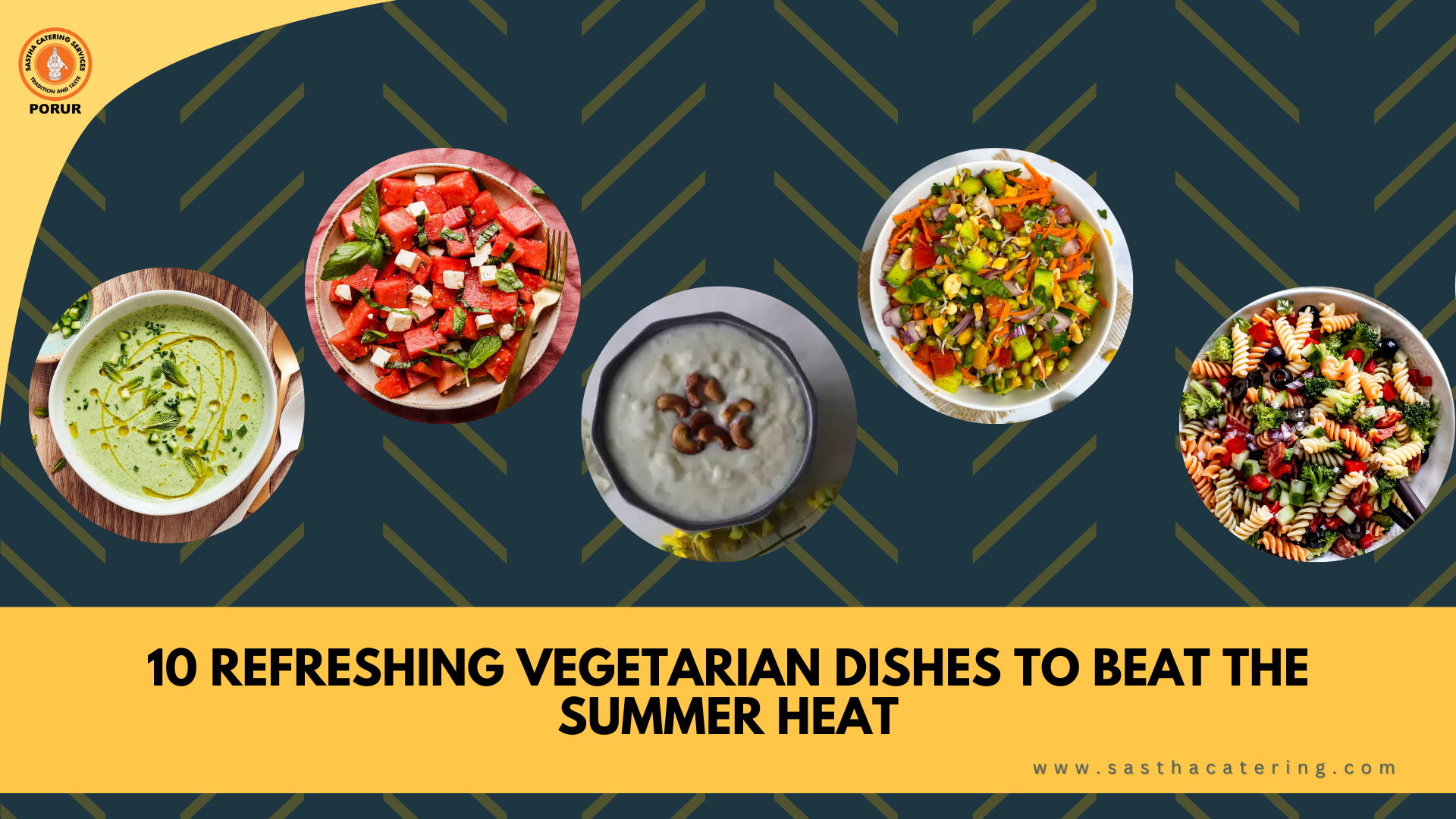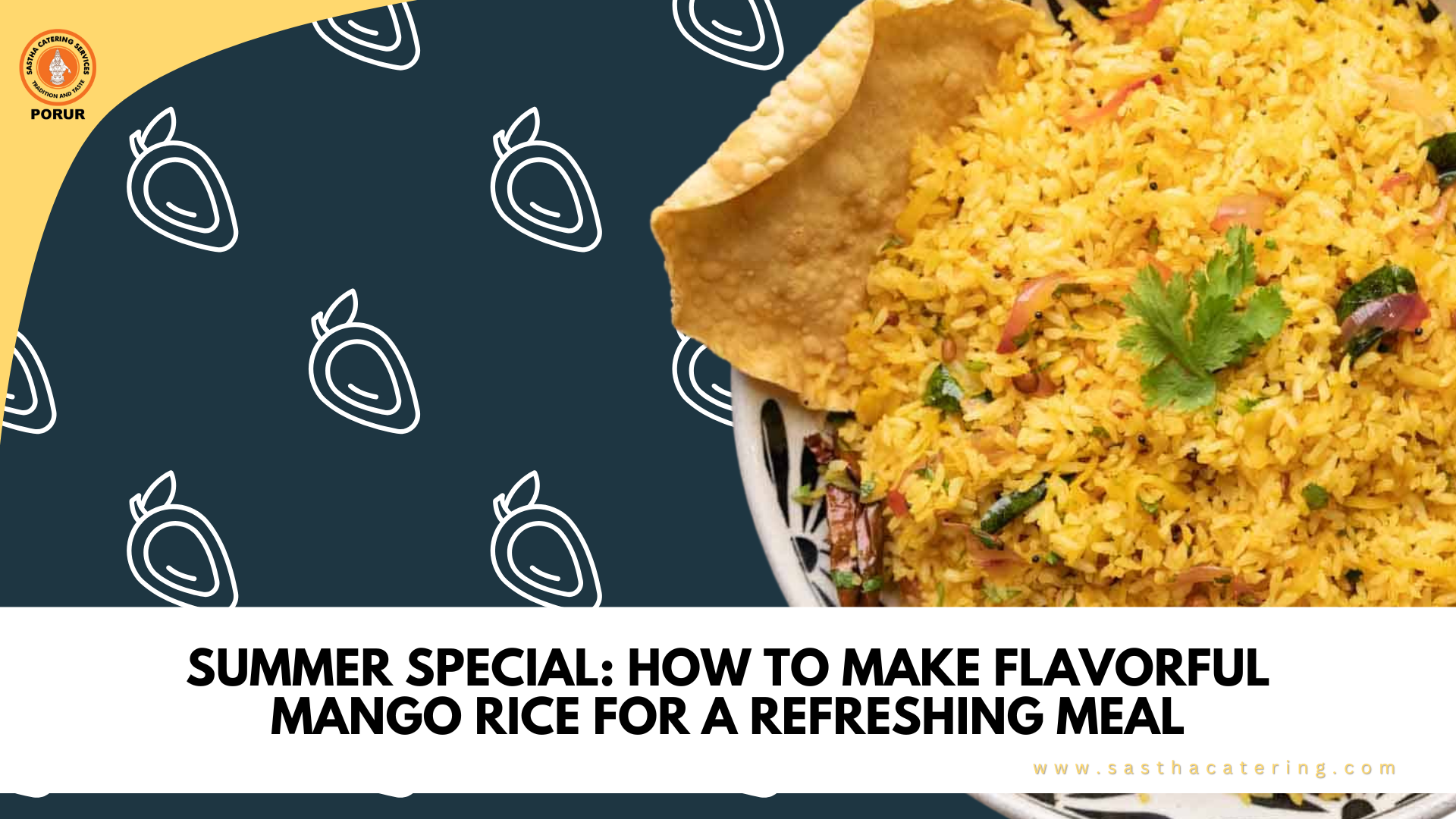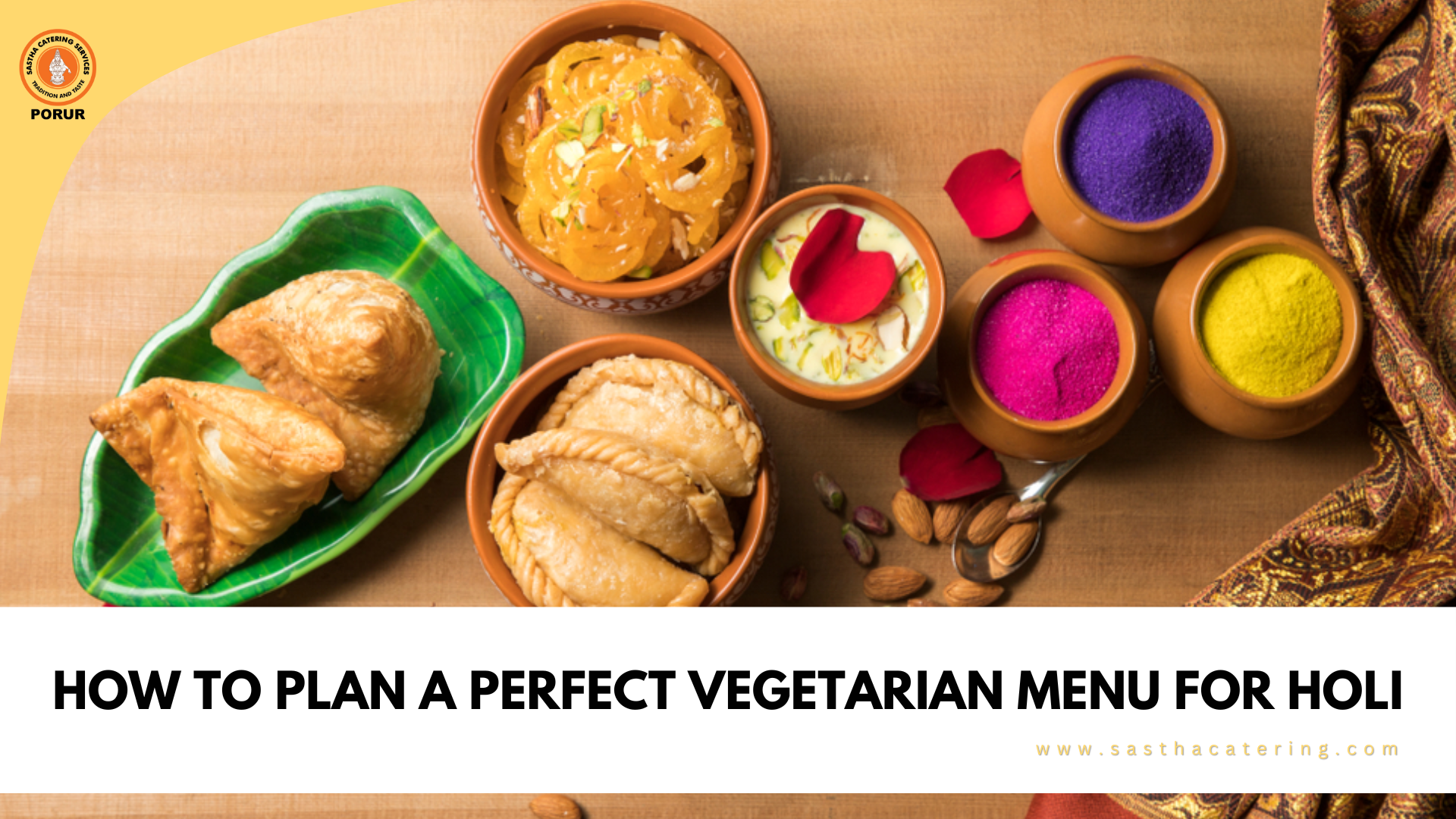
Adai is not only a dish but the celebration of flavor and heritage that lies within South Indian cuisine. This long-enduring breakfast pancake made of rice and lentil batter is the all-time favorite across most households in Tamil Nadu and remains high on many ‘to make lists’ for those in need of something quick and delicious enough to consume at any time.
Traditionally, Adai has been one of the staple accompaniments to most meals in Chennai, where catering services have mushroomed, adding an authentic touch to any gathering. Whether you are organizing a function with caterers in Chennai or just want to relish this yummy dish at home, mastering how to make perfect Adai is important.
In the following section, we would be discussing a few types of Adai, such as Vazhaipoo Adai, Murunga Elai Adai, Kothamalli Adai, Pudhina Adai, and Dry Fruit Adai-including their preparation and serving.
History of Adai
A traditional South Indian dish loved by people for so long has been Adai. Deep roots for its sources lie in regional culinary practices, from which long staple ingredients include rice and lentils. Essentially, adai is a tasty pancake prepared from a mixture of soaked and ground rice and lentils, along with added spices, herbs, and various vegetables.
Early Origins
The history of Adai goes back to ancient cultures of South India, where rice was one of the prime products cultivated in the agricultural fields. Archaeological researches indicate that in South India, rice has been cultivated for over 3,000 years back and, therefore, was always there in the menu of South Indians. The history of lentil too dates back to ancient times, for lentil is considered as one of the oldest domesticated crops.
Adai was probably a wholesome meal in that it combined these staple ingredients in one, typifying the resourcefulness of South Indian communities in using the bounty of their agriculture productively. It was among the common meals taken by farmers and laborers, who needed energy to work arduously.
Cultural Significance
In most South Indian homes, Adai is synonymous with festivals and celebrations. It represents abundance and getting together. It traditionally made for family gatherings and other occasions forms a wholesome meal and pays homage to cultural heritage.
The dish is very flexible in character, and families have different versions adapted to seasonal produce and personal preferences. All the regions of Tamil Nadu have their variations with regional add-ins in the form of Vazhaipoo (banana flower), Murunga Elai (drumstick leaves), Kothamalli (coriander), and Pudhina (mint). They are not only adding flavour but also nutritional value, thereby proving that traditional wisdom provides the best locally produced use.
Evolution and Modern Adaptations
Over time, Adai has moved from the beginnings of this humble food to widespread consumption across Tamil Nadu and has made its way into houses and restaurants across India and the rest of the world. Its renewed appreciation goes hand-in-hand with the increasing interest in vegetarianism and healthy eating.
Modern chefs and cooks have experimented with Adai as well, using quinoa, millets, and a host of spices in its preparation to suit diverse palates and dietary choices. There is appreciation for this food as healthy and nutritious food that even the most traditional consumer finds appealing; modern foodies add to glory it.
Catering services have thrived in urban cities such as Chennai, and Adai always finds a place in menus for family gatherings, weddings, and corporate events. Its versatility to suit the palates of people and its rich nutritional profile make it an ideal choice for different events and occasions.
Understanding the Fundamentals of Adai
Any good Adai begins with the right ingredients. You will need:
Rice: One rice combination that gives beautiful results is regular rice and parboiled for crispiness.
Lentils: Some other lentil splits that have been primarily used for Adai making are urad dal-black gram, chana dal-Bengal gram. Though not so common you may try other lentil splits also.
Vegetables and Herbs: This aids in fully using the fresh ingredients available like Vazhaipoo banana flower, Murunga Elai-drumstick leaves, Kothamalli or coriander, and Pudhina or mint.
Soak and Rinsing: Rice and lentil should be soaked at least 4 to 6 hours before grinding. It softens them and helps in grinding.
Grind into Smooth Consistency: The soaked ingredients should be ground into a coarse batter by adding water according to requirements. The consistency is slightly thicker than that of dosa batter.
Fermenting: Let the batter ferment for some hours, this would help to develop flavors. Fermentation is not a must do but adds to a softer texture.
Batter Preparation
Adai Cooking requires a pan which is kept hot or tawa:
Heat the Pan: Ensure the pan is very hot before pouring the batter. A properly heated pan would help get a crisp exterior.
Apply liberally: Rub oil all over the pan. You may opt for ghee or sesame oil to make your cooking flavourful.
Flatten the Paste: Pour a ladle of paste onto the pan and then spread it into a round shape. The thickness is evenly distributed so that it will cook properly.
3. Cooking Skill
Now that you have a good foundation, let’s now discuss the different types of Adai:
Vazhaipoo Adai : Add the finely chopped banana flowers to the batter, so you will get a different flavour. The bitterness from the flower gives an additional depth to the food. It tastes really good if it is served with coconut chutney.
Murunga Elai Adai: Healthy variant. Prepared with drumstick leaves, adding a fistful of fresh leaves to the batter gives a lovely green color and fresh taste. To be served with a tangy tomato chutney.
Kothamalli Adai: Fresh cilantro makes this Adai so flavourful. Add chopped coriander leaves to the batter and serve with a spicy green chutney. The herb not only adds flavor but also brings a burst of color to your plate.
Pudhina Adai: This Adai will have an added fresh, minty flavour with the freshness of pudhina. Add fresh mint leaves to the batter. Serve with yogurt or a cooling raita for the perfect balance.
Dry Fruit Adai: For a sweet twist, add chopped nuts and dry fruits like cashews, almonds, and raisins. This version can be served as a dessert or nutritious snack. Goes well with honey or jaggery syrup.
4. Serving Suggestions
While serving Adai, the possibilities are endless:
Chutneys: Have your Adai with several chutneys – coconut, tomato, or mint chutney.
Sides: Best served with a side of sambar or spicy pickle to enhance the flavor.
Presentation: Serve it stacked on a platter garnished with fresh herbs. It can be served in small bowls of chutney and side dishes. Extremely presentable.
Conclusion
It’s such a fun-filled experience making the perfect Adai, which can be creatively and personally implemented. Be it family breakfast or event catering in Chennai, understanding the nuances of every version of Adai would elevate your dish to the next level.
Appropriate ingredients, proper preparation techniques, and presentation will make your guests sure that you are a master chef for sure, and family members appreciate the effort for being great guests themselves. Come on, roll up those sleeves and let’s relish this delectable dish and capture all the flavors of South Indian food!




!["Guests being served vegetarian buffet at an event in Chennai, highlighting the popularity of veg catering services. [Sastha Catering]"](https://sasthacatering.com/blog/wp-content/uploads/2025/03/Healthy-Food-Initiatives-18.png)





